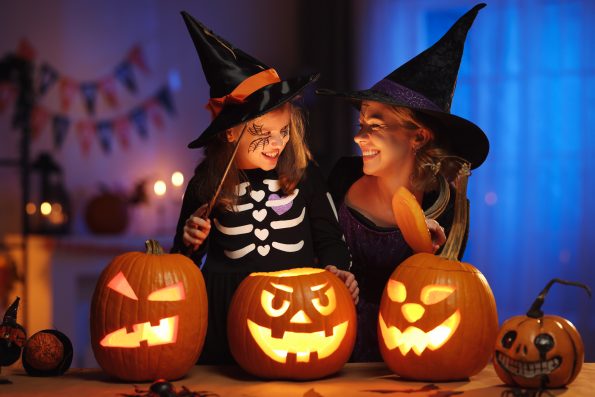How Orange And Black Became The Iconic Colors Of Halloween

When summer’s final days fade away and we’re thrust into the fall, stores rush to line their shelves with black and orange items that signify Halloween is right around the corner.
This iconic pairing has been associated with the holiday for what probably seems like forever. But have you ever stopped to ask yourself why this duo became known as “Halloween colors?”
The History Behind Halloween’s Hues
The spooky holiday has obviously changed over the years, but its origins trace back to Samhain, an ancient Celtic ritual.
Taking place from the night of October 31 into November 1, Samhain served to symbolize the seasonal transition.
It marked the completion of a summer full of plentiful harvests, as well as the beginning of the colder months, which were correlated with darkness and death.
This juxtaposition, viewed as light and darkness or life and death, essentially gave rise to the orange and black color scheme.
It was believed that the evening of Samhain was when ghosts of those who’d passed on made their way back to earth.
That’s why Celts lit massive bonfires during the festival to sacrifice both their harvest and animals. At the same time, they wore costumes and danced around.

JenkoAtaman – stock.adobe.com – illustrative purposes only, not the actual people
Spooky traditions have obviously moved in other directions since then, but October 31 continued to be perceived as an important date.
It was later known as All Hallow’s Eve, and then, in the 20th century, the holiday spread under the name of Halloween.
Samhain’s harvest and bonfire flames led orange to become a primary Halloween hue. On the flip side, black was incorporated due to ideas of darkness and death.
The United States witnessed the popularization of Halloween at the start of the 19th century, when The Dennison Manufacturing Company, a paper products business, decided to sell orange and black crepe paper decorations for the holiday. This increased the prevalence of Halloween parties among both kids and adults.
Additionally, in 1909, the same company began publishing Dennison’s Bogie Book, and it was sold for decades.
Within the book, which was like a magazine with DIY ideas, people could read all about Halloween celebration ideas and how to throw parties for the holiday.
You could learn how to plan menus and create spooky decorations, like handmade paper centerpieces that featured black cats and orange pumpkins.
This time period was very DIY when it came to Halloween, with celebrants making their own decor, costumes, games, and food.
Then, after World War II, technology evolved, and decorations for this holiday started being sold on a much larger scale.
That’s how we came to get the quintessential plastic Jack-o’-lanterns that are now widely available at practically every superstore in the country. Plus, Halloween decor expanded from just indoor party ideas to over-the-top outdoor decorations.
Sign up for Chip Chick’s newsletter and get stories like this delivered to your inbox.
More About:News